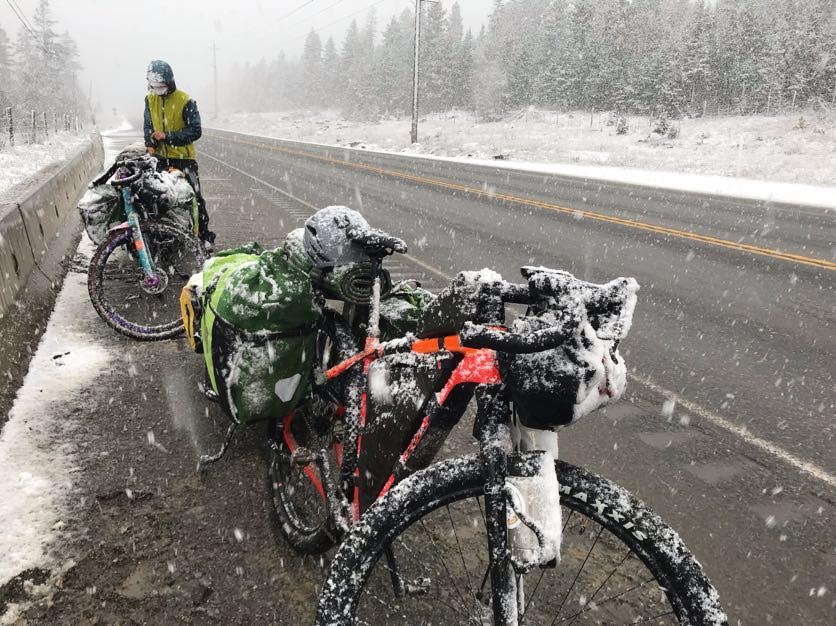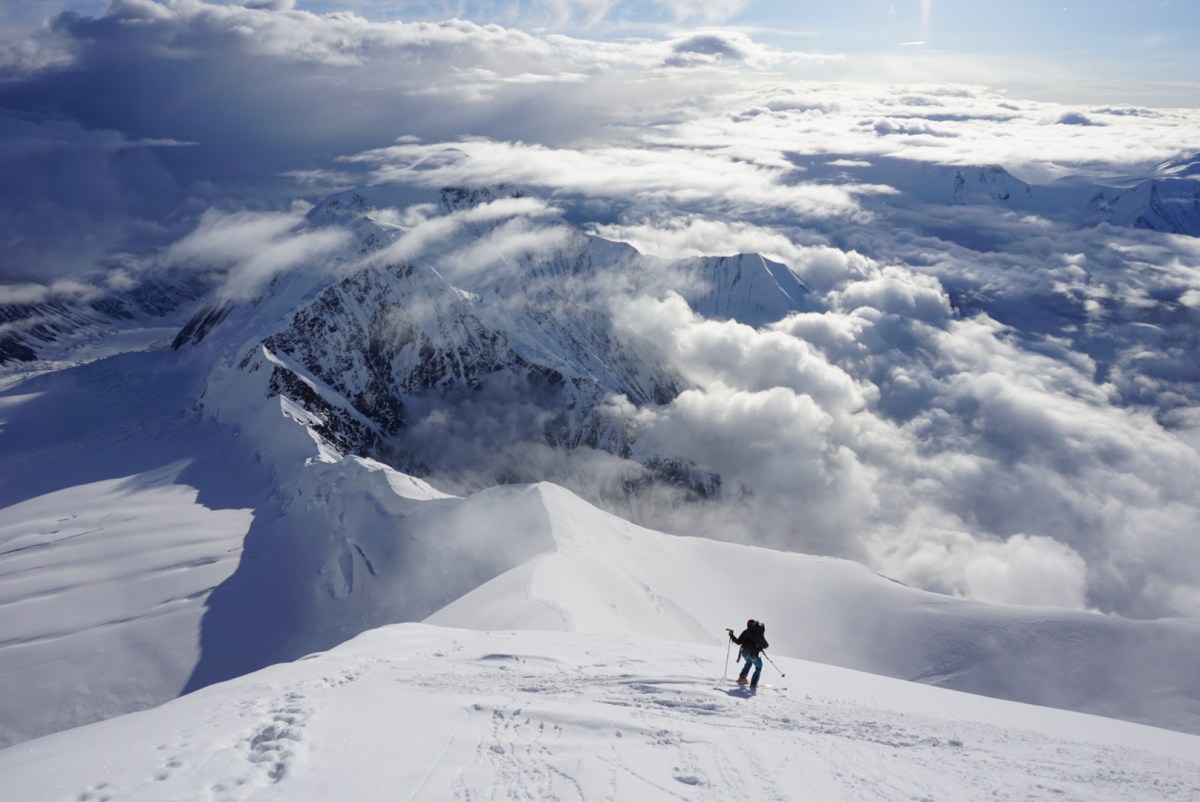For most climbers and ski mountaineers, a trip to the top of Denali takes about a month, door to door. Typically, the travel to Anchorage is the easy part—one final moment of relaxation on an airplane before the real work begins to climb the 20,320-foot peak. That wasn’t the case for Cody Hughes, 28, and Clay James, 27, two Salt Lake City climbers and skiers who summited last month after 84 days of human-powered travel.
Rather than check their bags at the Salt Lake City airport and board an airplane to Anchorage, the pair loaded all their camping, mountaineering and ski gear onto their bikes and, according to Hughes’ odometer, pedaled 3,560 miles from their doorstep to Denali National Park. They left home on March 20 and arrived in Talkeetna, Alaska, on May 18.
In an age when exploratory firsts are harder to find, unique adventures are becoming more a combination of ingenuity and physical effort, and this trip had no shortage of either. Hughes and James pushed their human-powered effort all the way to the summit of Denali, which forced them to climb a rarely used route on the mountain’s desolate, rugged north side. After their ski descent, they finally accepted some help and flew home, making their trip the longest known human-powered approach to the highest point in North America, according to Hughes.
“I’ve always wanted to go to the Alaska Range,” Hughes said. “I’ve honed my skills over the years to climb there, but I also knew I wanted the journey to be about endurance and grit.”

Photo Credit: Courtesy of Cody Hughes
Hughes, a backcountry ski guide, snow science expert and Grand Canyon rafting guide, has long had a fascination with bikepacking. In 2015, after watching a slideshow about another athlete’s bike-to-climb trip, he plopped his dog into the front of his cargo bike and rode for two and a half months from Salt Lake to Nashville (where he grew up), then on to New Orleans and Orlando.
“There’s something to earning every step,” Hughes said. “Doing it the hard way adds so much more value once you get there, and the trip becomes about the journey and being in the present moment, rather than just completing the mission.”
James, who grew up in Little Rock, Arkansas, is a passionate rock climber and skier. He’s roommates with Hughes in Salt Lake City and latched onto the idea immediately. This trip to Alaska was his first bicycle tour.
Aside from a general outline, Hughes said the trip planning was surprisingly minimal. They had a rough idea for their route to Alaska, sticking to pavement and low-elevation as much as possible. This kept their schedule relaxed and gave them the flexibility to adjust to changing conditions. But it also opened windows for things to go wrong.
“The first time I rode with the loaded-up trailer on my bicycle was maybe eight hours before we left,” said Hughes. But it wasn’t until they actually got moving that he and James realized they had serious issues with the weight distribution on their bikes. They fixed it by shifting things from the trailer to the bike. Then, simply getting out of Salt Lake was a hurdle, thanks to highways, dead-end frontage roads and a maze of side streets. “That ended up being one of the most difficult parts of the trip,” said Hughes.
Later, along British Columbia’s desolate Cassiar Highway, they struggled when a resupply fell through and they had to stretch out their food supply for a few extra days. Eventually, they flagged a car down on a remote stretch of road to ask for some fuel for their stove.
Hughes and James settled into a mile-crushing routine through Nevada, Idaho, Oregon, Washington and Canada. “We tried not to kill ourselves,” said Hughes, which meant lots of sleeping and recovery, lazy mornings, and breaks roughly every 10 miles. They moved north at a steady 60 miles per day pace, rolling into Talkeetna on May 18, exactly 60 days after their departure.
In Talkeetna—the final town outside the park used as the staging ground for climbing parties—the trip quickly took on a new element. The mountain’s typical route, the West Buttress, is only accessed by airplane. So, the duo looked to the other side of the mountain and the Muldrow Glacier route, which is more easily approached on foot, to finish their human-powered ascent. In Talkeetna, they secured permits, picked up dehydrated climbing food (the only thing they shipped ahead) and made final checks of their climbing gear. Then they were back on their bikes for the final 250-mile stretch until they reached Wonder Lake on the north side of the park.
There, they transitioned from bike to foot and shouldered backpacks full of gear. From Wonder Lake, Hughes and James made a backbreaking approach through the tundra to the Muldrow Glacier, which doesn’t actually include an established trail for them to follow. They had to make two trips to carry all of their gear from the road before they reached the snow and could load up pull sleds.

Photo Credit: Courtesy of Cody Hughes
For most Denali climbers, touching down on one of Denali’s glaciers is where the trip would just be starting. Hughes and James, meanwhile, were more than three months into their expedition. Rolling in, Hughes said, was a mixture of joy and stress—the switch from biking to getting on snow brought excitement and worry over the logistics of getting up the mountain.
Thankfully, a pristine weather window allowed Hughes and James to move up the route in a relatively quick 15 days and summit Denali on June 11. On top, the duo had the summit to themselves. “It was a pretty overwhelming sense of accomplishment, I felt like we did it,” said Hughes.
Their reward? What Hughes called some of the worst skiing of his life from the summit down to Denali Pass where they picked up their rest of their gear. After their descent, they called for an airplane from the Kahiltna Base Camp. From Talkeetna, they took the regular way home: driving back to Anchorage and flying to Salt Lake.
“I look back on it and I’m really not sure how much harder we could have made it on ourselves and I’m really proud of that,” said Hughes. “I miss the simplicity.”
